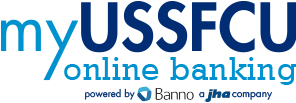How Credit Unions are Helping Members Survive Covid
Published: August 18, 2020

People helping people is what credit unions are all about.
The coronavirus has affected credit unions and their members to varying degrees across the nation. Even as we face a national pandemic, credit unions have shown the same resolve and determination they did from their early days being born out of the Great Depression. Jumping in to help during tough economic times is in the credit union DNA. Also, as a not-for-profit, credit union’s singular focus can be on the members and communities they serve.
As essential service providers, credit unions have kept the vast majority of their over 200,000 employees working during the stay home orders. Going above and beyond to meet the needs of the members and small businesses they serve, credit unions have proven once again, the necessity of a people-focused not-for-profit in the financial sector.
Credit unions across the nation have been stepping up to help their members and businesses during this once-in-a-lifetime crisis.
Offering short-term emergency loans, extended payment dates, and waiving fees are just a few of the ways credit unions have been helping members relieve financial stress during the Covid-19 pandemic. With member safety at the forefront, they’ve been ramping up digital offerings, encouraging mobile and home banking service usage, and operating remote call centers.
In addition to personal financial relief, credit unions of all sizes have teamed up with the Small Business Association to participate in the Paycheck Protection Program. According to the U.S. Department of Treasury’s Paycheck Protection Plan data set, 926 credit unions reported PPP loans since the program commenced on March 27, 2020. In aggregate, credit unions issued 194,340 loans over the past four months as they continue to do their part towards making sure the small businesses are financially equipped to staff and operate their company. True to the cooperative financial movement, 94.7% of loans at the top ten credit union PPP lenders by number are under $150,000.
Credit unions are there for members and communities, through the good times and times of trouble.
According to a survey*, conducted by the Credit Union National Association, 95% of credit unions surveyed are offering loan modifications, 80% have created new loan products in response to the crisis. 85% offer fee waivers. 64% are offering debt consolidation and/or financial counseling. 30% have made donations or otherwise aided community organizations.? And over 1.1 Million jobs have been saved through credit union participation in the Paycheck Protection Program.**
We will get through this and we will get through it together.
There is still a long road ahead before the country is on the other side of this pandemic. While challenges remain, one thing is certain, credit unions will emerge stronger and better equipped to meet the needs of their members. As we move toward a post-COVID-19 world, credit unions will be here to weather the storms and lead the way to brighter days.
About U.S. Senate Federal Credit Union
For 85 years, USSFCU has provided the U.S. Senate and Capitol Hill communities with world-class financial stability, security, and service. Now with 100 plus paths to membership, almost anyone has the opportunity to experience the USSFCU difference.
{beginAccordion h3}
Banks vs. Credit Unions
|
Credit Unions |
Banks |
|---|---|
|
At a credit union, the shareholder is a valued member and owner. |
At a bank, the customer has no ownership interest in the institution. Banks are owned by investors, who may or may not be depositors. |
|
Since credit union members are owners, each member, regardless of how much money they have on deposit, has one vote in electing board members. Members can also run for election to the board. |
Banks are owned and controlled by stockholders, whose number of votes depends upon the number of shares owned. Customers do not have voting rights, cannot be elected to the board, and have no say in how their banks are operated. |
|
Credit union boards are comprised of volunteers who reflect the diversity of their membership. |
Bank board members are paid and do not necessarily reflect the diversity of their customer base. |
|
Credit unions are local and organized to serve the interests of their membership. |
Banks are open to the general public. |
|
Credit unions are not-for-profit, cooperative organizations owned entirely by and operated for their memberships’ benefit. Earnings are paid back to members in the form of higher savings rates and lower loan rates. |
Banks are for-profit corporations with declared earnings paid to stockholders only. |
|
Credit unions focus on consumer loans and member savings, as well as services needed by their membership. |
Banks focus on commercial loans and accounts plus services that generate significant income. |
|
Credit unions cooperate with other credit unions and share resources to bring convenience and savings to their respective members. CU Service Centers and the CO-OP ATM Network are just two examples of this cooperation between credit unions. |
Competition between banks prohibits the sharing of resources. |
|
In the entire history of U.S. credit unions, taxpayer funds have never been used to bail out a credit union. |
The Savings and Loan Crisis (and bailout) in the late 1980s into the 1990s, as well as the more recent bank bailouts, used taxpayer funds. |
|
Credit union deposits are federally insured up to $250,000 by the National Credit Union Administration (NCUA), an independent federal agency. |
Bank deposits accounts are federally insured up to $250,000 by the Federal Deposit Insurance Corporation (FDIC), an independent federal agency. |
The USSFCU Difference
When you choose USSFCU as your financial institution, you are not just a customer—you are a valued member and owner. We are committed to providing you with the same stability, security & service we have been providing the Senate Community since 1935.
Stability
Being the official credit union that serves the U.S. Senate brings a lot of stability that most other financial institutions don’t enjoy. However, that is the floor where our stability starts and we have built on that for almost a century. Making measured decisions in regards to growth and expansion that ensures we grow at a healthy rate while incurring as little risk as possible has been a longstanding strategy for the credit union. This award-winning growth strategy will propel us over the $1 billion mark while keeping the best interest of our members at the center of all our decision-making.
Ranked #1 best-performing credit union of 2018 by S&P Global Market Intelligence.
Top 200 Healthiest Credit Unions in the Nation in 2018 & 2019.
Security
Because of who we serve it goes without saying that member security and protection of member data is of the utmost importance. We go to extreme measures to ensure that our data security meets the highest levels and undergoes rigorous testing to ensure what we have in place is impermeable. Additionally, because threats are always changing so are our measures of protection. Our IT security team is constantly improving and increasing their knowledge to ensure we have the pieces in place to best protect our members from potential threats.
Service
Providing exceptional service is a longstanding tradition at USSFCU. Our members consistently rate USSFCU at 91% in Overall Satisfaction through our Members’ Voice satisfaction survey program.
Below is just one testimonial from a member…
“Excellent customer service. Staff are knowledgeable, responsive and able to provide individualized help. I live in another state and am still amazed how easy it is to use USSFCU for all my financial needs. It has always been this way and with technology solutions, it is easier than ever. But it is the personal assistance that really makes the difference. Whether I call or email, I always get quick and reliable answers. Also, the financial products and services offered are great!”
-Joanne • Brooklyn, NY
{endAccordion}
*A survey conducted by Credit Union National Association and state credit union leagues. As of April 15, 2020, 611 credit unions participated. **The SBA’s Paycheck Protection Program Report approval through 6/30/20.






